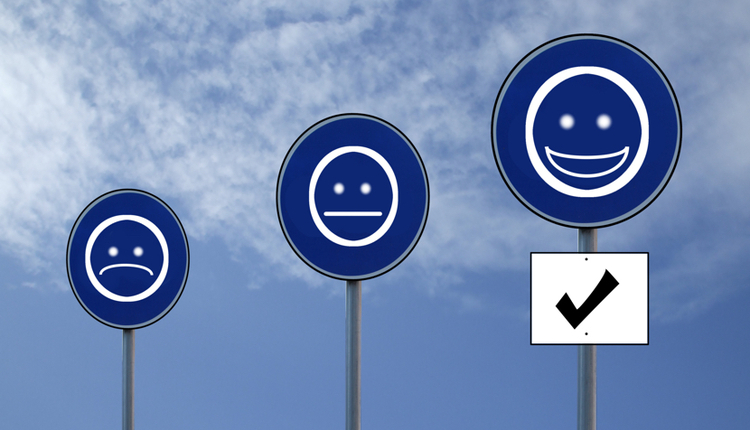
Image by: Rawpixel Ltd, ©2016 Getty Images
Once upon a time, healthcare payer communications with its members was transaction-oriented and compliance-driven. Today, as the healthcare payer landscape embraces personalized communications technologies and effective engagement strategies, member communications are evolving—for the better. As members take greater control of their health, payers are now arming members with relevant information via communications campaigns that are equipped to deliver superior personalized value.
What are the four ways in which healthcare payers embrace member communications today?
1. Payers deploy centralized communications utilizing a localized platform capable of multi-channel distribution, which enables quick, targeted communications while lowering operational costs.
2. Payers become consumer-centric by providing timely, relevant, persona-driven information to today’s increasingly tech-savvy members.
3. Payers create genuine dialogues with members via mobile, social, and video-enabled engagement.
4. Organizations utilize solutions that allow payers to aggregate data across an organization—allowing for a 360-degree-view of every member.
There is power in personalized communications—direct mail, brochures, flyers, customer welcome kits, social media, email, text messaging, online portal dialogues, and much more. Businesses in all segments, particularly those that are heavily regulated, are taking a multi-channel approach in delivering personalized communications to clients.
By connecting with the customer, or prospective customer, in a more personalized way, companies are delivering purpose-driven marketing designed to engage with storytelling, video, and visual strategies—omni-channel communications provide a dynamic, engaging, and consistent message to customers.
Personalized multi-channel campaigns create loyal customer relationships by integrating several touchpoints for engaging the customer. For example, using existing customer data, personalized direct mail coupon booklets or mobile advertising featuring special offers and savings can be issued by a major retailer. Based on the customer’s purchase history, the retailer can drive the content of the communication in order to share personally relevant information on the retailer’s events or in-store offers.
Client-centric experiences
Today's progressive enterprises are thinking more creatively and strategically about how to design communications programs that will attract and retain customers.
To retain or build market share, a company needs to examine its marketing communications to provide a more customized, B2C-style user experience. A company’s ability to do that effectively depends on its customer data, analytics tools, systems, and business processes.
A company of any size can gain competitive advantage with a coordinated campaign delivering personalized customer engagement.
When it comes to delivering an exceptional client-centric customer experience, enterprises in all key markets today are taking the responsibility of exceeding customer expectations with their communications very seriously.
Remember, we are in a consumer-driven society accentuated by the rise of the millennials who, by 2020, will comprise nearly half of the American workforce and nearly 70% of consumer decisions. Currently, today's millennials use of technology clearly sets them apart. This generation has grown up with Wi-Fi, smartphones, tablets, and social media being the norm and expects instant access to information—that is crafted with them, and only them, in mind.
Personalization is not a driving trend in only today’s healthcare market. It’s a driving trend in every market—insurance, financial services, pharmaceuticals, and even your dentist.
- Universities are deploying personalized communications to increase enrollment.
- Insurance companies produce customer-centric, personalized enrollment materials, decision support documents, interactive presentations, e-books, and more.
- Today’s global financial services institutions are continually challenged to exceed customer expectations for fast, accurate, and secure communications, services, and transactions—with personalization at the forefront of engagement.
- Leaders in pharmaceuticals and medical device manufacturing are increasingly reaching out to customers using tools like marketing automation technology to create highly personalized communications across all channels.
There is power in personalized communications—direct mail, brochures, flyers, customer welcome kits, social media, email, text messaging, online portal dialogues, and much more. Businesses in all segments, particularly those that are heavily regulated, are taking a multi-channel approach in delivering personalized communications to clients.
By connecting with the customer, or prospective customer, in a more personalized way, companies are delivering purpose-driven marketing designed to engage with storytelling, video, and visual strategies—omni-channel communications provide a dynamic, engaging, and consistent message to customers.
Personalized multi-channel campaigns create loyal customer relationships by integrating several touchpoints for engaging the customer. For example, using existing customer data, personalized direct mail coupon booklets or mobile advertising featuring special offers and savings can be issued by a major retailer. Based on the customer’s purchase history, the retailer can drive the content of the communication in order to share personally relevant information on the retailer’s events or in-store offers.
Client-centric experiences
Today's progressive enterprises are thinking more creatively and strategically about how to design communications programs that will attract and retain customers.
To retain or build market share, a company needs to examine its marketing communications to provide a more customized, B2C-style user experience. A company’s ability to do that effectively depends on its customer data, analytics tools, systems, and business processes.
A company of any size can gain competitive advantage with a coordinated campaign delivering personalized customer engagement.
When it comes to delivering an exceptional client-centric customer experience, enterprises in all key markets today are taking the responsibility of exceeding customer expectations with their communications very seriously.
Remember, we are in a consumer-driven society accentuated by the rise of the millennials who, by 2020, will comprise nearly half of the American workforce and nearly 70% of consumer decisions. Currently, today's millennials use of technology clearly sets them apart. This generation has grown up with Wi-Fi, smartphones, tablets, and social media being the norm and expects instant access to information—that is crafted with them, and only them, in mind.
Erik Raper heads Paragon’s Marketing and Advisory Services teams across focused industries. In this role, he leads his team to bring deep industry experience, rigorous analytical capabilities and a pragmatic mindset to clients’ most complex business problems. Visit Paragon Solutions on Twitter @consultparagon or www.consultparagon.com.













